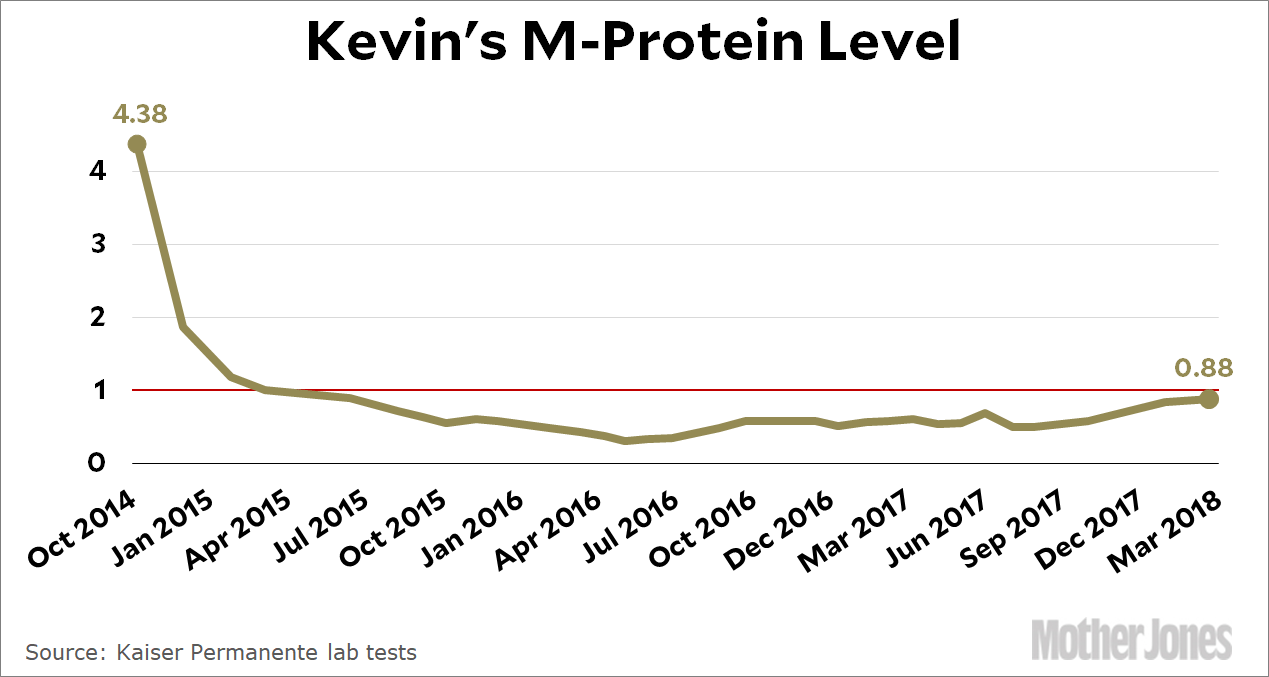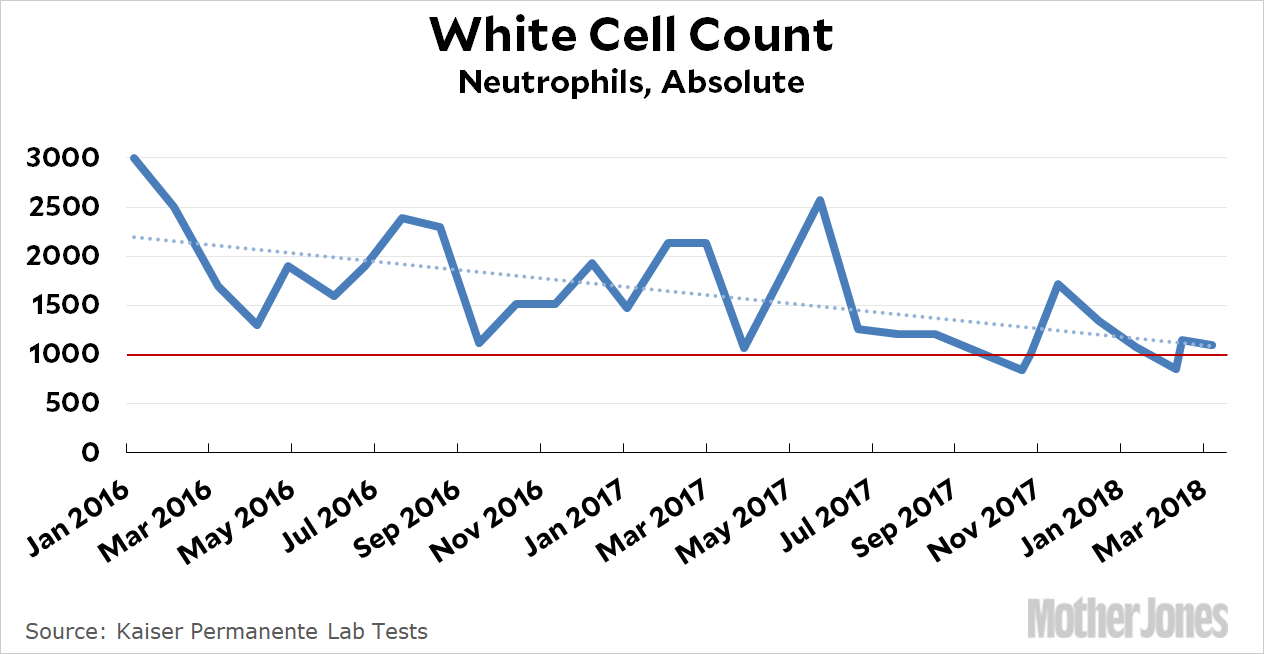Today you get two charts showing my health status. Exciting!
First off, here’s the usual M-protein chart, which provides a rough idea of how well the multiple myeloma is being controlled:

As you can see, it’s been rising slowly but steadily for several months now. Generally speaking, the Revlimid maintenance phase of my treatment is usually good for about two years, and I’m already past two-and-a-half. When the M-protein level gets consistently above 1.0, it will be time to switch to a second-line treatment. If this happens in late summer, I will have gotten three years out of the Revlimid, which isn’t bad.
But that’s not the only reason my Revlimid phase is nearly over. One of the side effects of Revlimid—along with lots of other chemotherapy—is that it affects your immune system. I get tested every month for this, and here’s what it looks like for the past couple of years:

The normal level for this is about 5,000. When it gets below 1,000, things get a little worrisome. I’ve dipped below that a couple of times recently, and it’s pretty obvious I’m going to drop below 1,000 consistently starting in a few months. This makes me more vulnerable to various illnesses, of course, and it also produces periodic stomach problems. So this is yet another sign that my Revlimid phase is nearly over. My body has simply stopped tolerating it.
Most likely, I’ll switch to a second-line treatment sometime this summer. It’s one of the newer meds combined with the evil dex, which will provide me with an exciting free night once a week, followed by killer naps for a few days afterward as my body tries to recover its lost eight hours. But at least I know what to expect, and the infusion cycle only lasts eight weeks. So that’s not too bad.
Bottom line: things are progressing about as expected. My personal guess is that I’ll cycle through a second-line, third-line, and possibly fourth-line treatment before it’s time to investigate the new CAR-T therapies that are still in development. My oncologist, oddly, had a very negative reaction when I mentioned this to him. I’m not quite sure why, and it’s not a big issue right now. Hopefully the clinical trials will progress well and provide me with an alternative treatment two or three years from now, which is probably when I’ll need it.

















